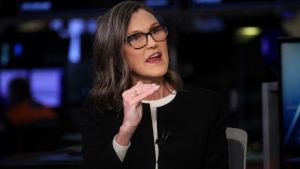Rolls-Royce (LSE: RR.) shares are hot right now. This year, they’ve risen from 300p to 540p – a gain of 80% – on the back of investor excitement.
But how much are the shares really worth as we head towards 2025? Let’s take a look.
The right price
There are a number of ways to try and work out a company’s ‘intrinsic’ value (how much it’s really worth). But no method’s foolproof – they all involve making some assumptions.
One method is to assign an earnings multiple to the near-term earnings per share (EPS) forecast. Given the market’s focus on price-to-earnings (P/E) ratios, this method can make sense.
The problem is it’s hard to know exactly what multiple to use. It’s very subjective. Personally, I feel that a P/E ratio of 20 is about right for Rolls-Royce as it’s an industrial company with a high level of capital expenditures. Given that the EPS forecast for 2025 is 21p, that gives us a price of 420p.
That earnings multiple could be too low however. It seems City analysts believe the shares are worth a higher multiple. Currently, the average price target among the analyst community is 550p, according to my data provider.
That would put the P/E ratio at 26 though. And for me, that’s too high – that’s a tech stock valuation!
Crunching the numbers
Another approach to determining intrinsic value is what’s known as a discounted cash flow (DCF) analysis. This involves forecasting a company’s future free cash flows, ‘discounting’ them to a present value today using a certain interest rate, and then adding them all up.
This strategy’s commonly used by professional investors. Again though, there’s a lot of guesswork involved. With this type of analysis, investors need to forecast future free cash flows and growth rates and then determine an appropriate discount rate. So there’s a lot that can go wrong.
But we can have a go. Currently, Rolls-Royce is expecting to generate free cash flow of £2.1bn-£2.2bn this year. Let’s say that it achieves £2.2bn and then grows this by 15% for the next five years before growth slows to 5% a year for the next decade.
And let’s say that 10%’s the right interest rate to discount future cash flows back to present day values. In this scenario, we get an intrinsic value of about 400p. That’s about 25% below the current share price.
My forecasts may be too pessimistic however. If I increase the cash flow growth rates, the intrinsic value estimate rises.
Better shares to buy?
In summary, it’s hard to know what Rolls-Royce shares are really worth. Ultimately, it depends on the valuation approach used and the assumptions made.
Personally, I think the shares are a little overvalued at current levels. That’s why I’m focusing on other opportunities in the market right now.
This post was originally published on Motley Fool







